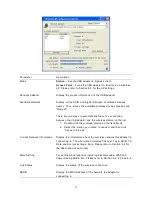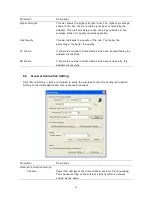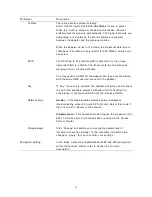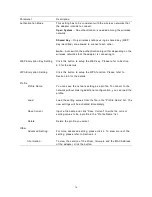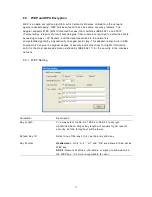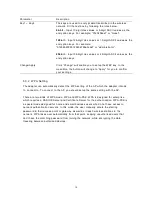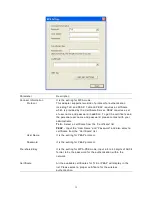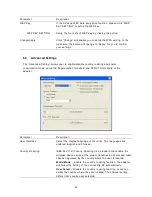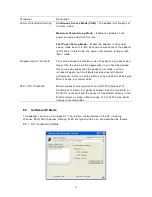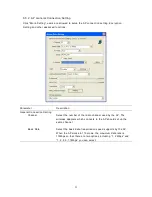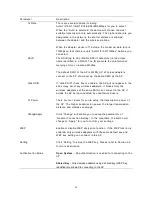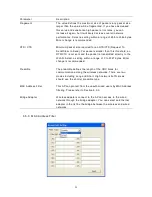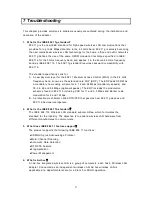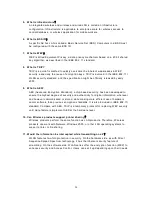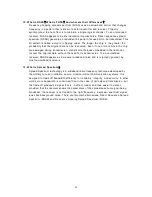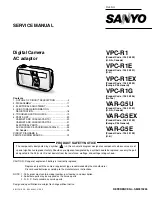
7 Troubleshooting
This chapter provides solutio ns to problems us ually e nco untered d uring t he installatio n a nd
operation of the adapter.
1. What is the IEEE 802.11g standard?
802.11g is the new IEEE stand ard for hig h-speed wireless LAN communicatio ns that
provid es for up to 54 Mbps data rate in the 2.4 GHz ba nd. 802.11g is quick ly becoming
the ne xt mainstream wireless LAN tec hnology for the home, office and pub lic networks.
802.11g defines t he use of the same OFDM mod ulatio n tec hniq ue specified in IEEE
802.11a for the 5 GHz freque ncy ba nd a nd applies it in the same 2.4 GHz freq ue ncy
band as IEEE 802.11b. The 802.11g standard req uires backward compatibility with
802.11b.
The sta ndard specifica lly calls for:
A. A new phys ical lay er for the 802.11 Medium Access Co ntrol (MAC) in t he 2.4 GHz
freque ncy ba nd, know n as the exte nd ed rate PHY (ERP). The ERP adds OFDM as
a ma ndatory new coding sc heme for 6, 12 and 24 Mbps (mandatory speeds), and
18, 36, 48 and 54 Mbps (optional speeds). The ERP inc ludes t he mod ulatio n
sche mes found in 802.11b includ ing CCK for 11 and 5.5 Mbps and Barker code
mod ulatio n for 2 and 1 Mbps.
B. A protection mec ha nis m called RTS/CTS t hat gover ns how 802.11g devices a nd
802.11b devices interoperate.
2. What is the IEEE 802.11b standard
?
The IEEE 802.11b Wireless LAN standard subco mmittee, whic h formulates the
standard for the ind ustry. The objective is to enable wireless LAN hardware from
different ma nufactures to communicate.
3. What does IEEE 802.11 feature support
?
The prod uct supports the following IEEE 802.11 functio ns:
z
CSMA/CA plus Ack nowle dge Protocol
z
Multi-Cha nnel Ro aming
z
Auto matic Rate Selectio n
z
RTS/CTS Feature
z
Fragme ntatio n
z
Power Manageme nt
4. What is Ad-hoc
?
An Ad- hoc integrated wireless LAN is a group of comp uters, each has a Wireless LAN
adapter, Connected as an inde pe nde nt wireless LAN. Ad hoc wireless LAN is
applicab le at a departmental scale for a branc h or SOHO operation.
27

